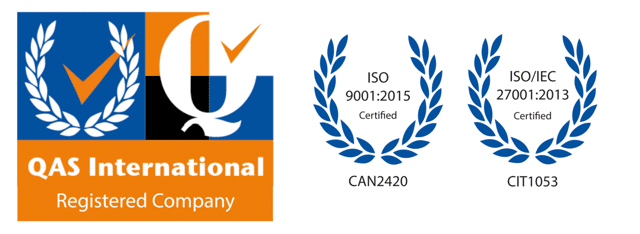As organizations settle into Work From Home (WFH) and hybrid work environments, discussions have shifted toward managing risks, streamlining processes, and maximizing budget efficiency. Today, we’re spotlighting an often-overlooked yet critical aspect of employee management: the offboarding process. In this blog, we’ll explore why having an effective offboarding plan is vital for reducing risk, staying organized, and maintaining cost-efficiency.
Why Offboarding Matters
A well-structured offboarding process goes beyond collecting company assets. It’s about maintaining company security, protecting intellectual property, ensuring compliance, and providing an organized transition. Offboarding, if done right, also serves as a positive ending note that could bring employees back to your organization in the future.
The Seven-Point Offboarding Guide
To ensure a smooth transition, we’ve outlined seven key components of the offboarding process:
1. Conduct an Exit Interview and Plan Knowledge Transfer
Exit interviews provide valuable insights into your work environment. Engaging with departing employees gives you a chance to identify any improvements you can make to your work culture. It’s also essential to plan for the transfer of knowledge, especially if the employee holds a key role. An organized transfer ensures that ongoing projects aren’t stalled and critical company information stays within the organization.
2. Communication is Key
Communicating an employee’s departure internally to all impacted team members and departments ensures that everyone knows the next steps. Whether it’s for project reallocation, customer communication, or simply awareness, prompt and open communication ensures a seamless transition and helps minimize any surprises.
3. Asset Recovery and Reallocation
Ensuring that all company assets are returned before the employee leaves helps you avoid unnecessary expenses. Assets can include laptops, smartphones, tablets, and even virtual access tokens. With WFH in mind, consider offering return options, such as shipping labels or scheduled pick-ups. Proper asset recovery not only helps you save money but also allows for swift reallocation to new team members.
4. Revoke System Access Immediately
A vital aspect of securing your IT infrastructure is removing system access for departing employees. This includes deactivating access to all devices, cloud platforms, VPNs, shared drives, and any other digital resources used during employment. The sooner access is revoked, the lower your security risk. Close coordination between HR, IT, and direct supervisors ensures nothing is overlooked.
5. Review and Cancel Unnecessary Subscriptions and Licenses
Avoid wasting money on software subscriptions or cloud services that are no longer needed. By reviewing subscriptions linked to the departing employee, you can save on redundant software costs. Collaborate with the IT department to ensure the subscription inventory is up-to-date and reflects current requirements.
6. Collect Feedback for Process Improvement
Offboarding is not just about the departing employee—it’s also about making improvements for your organization. As part of the offboarding interview, ask employees how you could improve your processes. Their unique perspectives, especially those who are leaving, could give you valuable insights for improving the organization, onboarding practices, or even better retention strategies.
7. Plan for Long-Term Risk Management
Finally, ensure that the offboarding process is well-documented and adaptable to future changes. A standardized Standard Operating Procedure (SOP) helps guide different scenarios, whether it’s an immediate termination, a resignation with a notice period, or a role relocation. Proper documentation will keep your processes consistent, compliant, and easy to update.
The Role of IT in the Offboarding Process
The role of IT is central to the offboarding process—from disabling accounts to retrieving equipment, IT ensures the protection of sensitive company data. At Pund-IT, our dedicated team uses standardized procedures and advanced tools to make the offboarding process as seamless and risk-free as possible for our clients. Our goal is to ensure your company data is protected while reducing the impact of an employee departure.
A solid offboarding plan is an essential part of protecting your business. By following our Seven-Point Offboarding Guide, you’ll reduce your risk, maintain operational continuity, and improve employee experiences even as they move on. At Pund-IT, we’re here to help streamline these processes so your focus can remain on growing your business.
If you’re interested in taking your offboarding process to the next level, Contact Us today to see how we can help enhance your security and efficiency.
Thank You for Joining Our New Ownership Celebration
We’d like to extend a heartfelt thank you to all who joined us for our New Ownership Party on the 20th. It was an incredible experience to connect with our clients and partners to mark this significant milestone. Piotr, Wayne, Rosita, and Cedric are excited to embark on this new chapter for Pund-IT. Your support is key to our ongoing success, and we look forward to many more achievements together.
Food Drive Appreciation
We also want to give a big shoutout to everyone who has contributed to our year-round food drive. As we prepare for the final collection day on September 27th, your generous donations are helping support families in need throughout our community.



